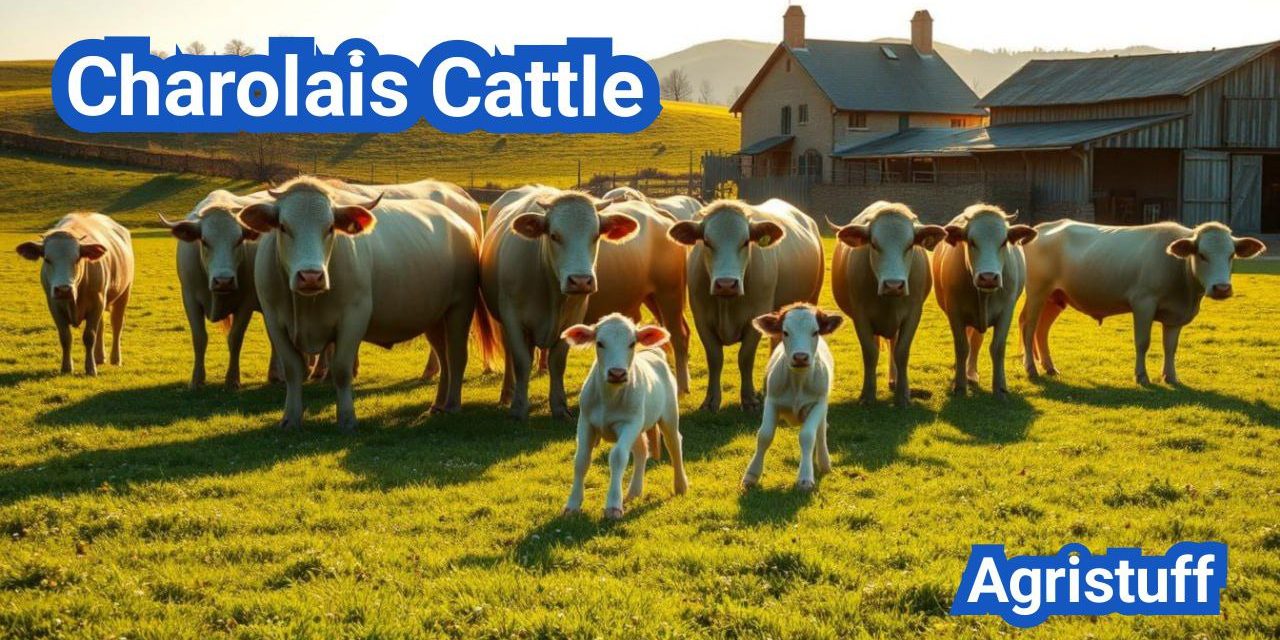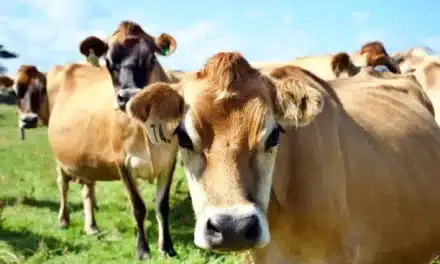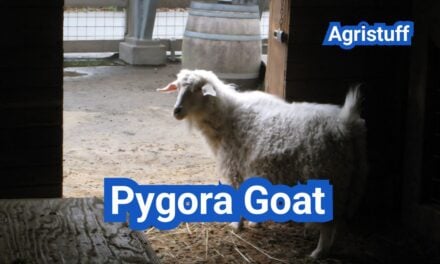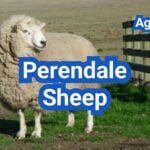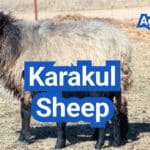The Charolais ( Charolais Cattle ) breed is a renowned French taurine beef breed originating from the Charolais area in eastern France.
Known for their white or cream-colored coats, Charolais cattle are medium to large framed, making them a significant breed in the beef industry.
This breed is prized for its beef production due to its favorable growth rate and carcass quality.
Originating in the Saône-et-Loire department, the Charolais breed has become a staple in livestock farming globally.
Key Takeaways
- Charolais is a French taurine beef breed.
- Known for white or cream-colored coats.
- Medium to large framed, significant in the beef industry.
- Prized for favorable growth rate and carcass quality.
- Originated in the Saône-et-Loire department.
The History and Origin of Charolais Cattle
With roots tracing back to the Charolais region of France, this cattle breed has become a global phenomenon. The Charolais cattle origin is deeply rooted in the historical development of the breed, which was initially bred for its robust characteristics and high-quality beef.
French Roots and Development
The history of Charolais cattle began in the Charolais region of France, where they were developed from local cattle breeds. The breed was known for its muscular build and fast growth rate, making it an ideal choice for beef production. Over time, selective breeding enhanced these traits, establishing Charolais as a premier beef breed in France.
Global Expansion and American Introduction
The global expansion of Charolais cattle began with exports from France to various countries. Charolais cattle were introduced to the southern United States from Mexico in 1934, marking the beginning of their presence in North America. Since then, the breed has gained popularity across the United States due to its superior beef-producing qualities.
The Charolais breed has been integrated into various breeding programs worldwide, contributing to its global distribution. Its adaptability and performance have made it a favorite among cattle producers, further expanding its reach.
Understanding Charolais Cattle Characteristics

Charolais cattle are renowned for their distinctive appearance and robust characteristics, making them a popular choice in the beef industry. Their unique physical traits and temperament contribute significantly to their value in cattle farming.
Physical Traits and Identification
Charolais cattle are easily identifiable due to their white or cream-colored coats, pink muzzles, and pale hooves. They are characterized by a medium to large frame with a deep and broad body, contributing to their muscular appearance and growth potential.
Their physical attributes make them stand out among other breeds. The breed’s muscular development and growth rate are key factors in their popularity for beef production.
Temperament and Behavioral Qualities
Charolais cattle are known for their calm temperament, which makes them easier to handle and manage on farms. This trait is particularly valuable as it reduces stress during handling and improves overall farm safety.
Their docile nature also contributes to better productivity, as less energy is expended on aggressive behaviors. This calm demeanor is one of the reasons Charolais are favored by many cattle producers.
How to Select Quality Charolais Breeding Stock
Selecting the right Charolais breeding stock is a critical decision that can significantly impact the success of your cattle operation. The quality of your breeding program depends on careful selection, focusing on traits that enhance the overall productivity and genetic potential of your herd.
Evaluating Bulls for Breeding Programs
When evaluating bulls for your Charolais breeding program, several key factors should be considered. Muscling and growth rate are crucial as they directly influence the performance of the offspring. A bull with good muscling and a high growth rate is likely to sire calves that grow quickly and efficiently.
Fertility is another critical trait. A fertile bull is essential for achieving high conception rates in your herd. Evaluating a bull’s reproductive health and history can provide insights into his fertility potential.
- Assess the bull’s libido and breeding soundness.
- Examine his semen quality.
- Review his breeding history and conception rates.
Choosing Productive Females and Replacement Heifers
Selecting productive females and replacement heifers is equally important. Reproductive efficiency and maternal traits should be the primary considerations. Females that are fertile, have a good calving history, and exhibit strong mothering abilities are ideal for maintaining a productive herd.
When choosing replacement heifers, look for individuals that are well-grown, have a good temperament, and show signs of early fertility. These traits indicate a heifer’s potential to become a productive member of your breeding herd.
- Evaluate their growth rate and development.
- Assess their reproductive tract scoring.
- Consider their genetic background for desirable traits.
By carefully evaluating both bulls and females for your Charolais breeding program, you can make informed decisions that enhance the quality and productivity of your herd.
Setting Up Facilities for Charolais Cattle

Establishing a successful Charolais cattle operation starts with setting up the right facilities. Charolais cattle, known for their robust growth rate and high-quality beef, require specific conditions to thrive.
Pasture Requirements and Fencing Considerations
Charolais cattle need adequate pasture to graze. The quality and quantity of pasture directly impact their growth and productivity. A well-managed pasture should provide a mix of grasses and legumes, ensuring a balanced diet for the cattle.
Pasture Management Tips:
- Rotate pastures to avoid overgrazing and maintain soil health.
- Monitor pasture quality regularly and adjust stocking rates as necessary.
- Implement a fertilization program to enhance pasture productivity.
Fencing is another critical aspect of Charolais cattle facilities. Fencing should be sturdy enough to keep the cattle contained and protect them from predators. The type and height of fencing can vary depending on the specific needs of the operation.
| Fencing Type | Description | Cost Estimate |
|---|---|---|
| Barbed Wire | Traditional and cost-effective, suitable for most cattle operations. | $1.50 – $2.50 per foot |
| High-Tensile Wire | Durable and long-lasting, ideal for larger operations. | $2.00 – $3.50 per foot |
| Electric Fencing | Effective for rotational grazing and temporary fencing needs. | $1.00 – $2.00 per foot |
Shelter and Handling Equipment Needs
Adequate shelter is essential for protecting Charolais cattle from extreme weather conditions. Barns or sheds can provide the necessary shelter, and their design should ensure good ventilation and easy cleaning.
Handling equipment, such as chutes and squeeze chutes, is crucial for the safe and efficient management of Charolais cattle. These facilities enable farmers to perform tasks like vaccinations, hoof trimming, and cattle identification.
Key Handling Equipment:
- Chutes for restraining cattle during handling.
- Squeeze chutes for safe vaccinations and medical procedures.
- Loading ramps for easy transportation of cattle.
By investing in the right facilities, Charolais cattle farmers can improve the health, productivity, and overall profitability of their operations.
Nutrition Management for Optimal Growth
Charolais cattle have specific nutritional needs that must be met to ensure optimal growth and performance. Nutrition plays a critical role in the development and quality of Charolais beef, impacting both the health of the cattle and the profitability of the operation.
Feed Requirements Through Different Life Stages
The nutritional requirements of Charolais cattle vary significantly through their different life stages. Calves require a diet rich in protein and energy to support their rapid growth and development. As they mature, their nutritional needs shift to support maintenance, growth, and eventually, reproduction.
For breeding females, adequate nutrition is crucial during pregnancy and lactation. Ensuring that they receive the necessary nutrients supports the health of both the dam and the calf, improving overall herd productivity.
Supplementation Strategies for Performance
Supplementation is a key component of nutrition management for Charolais cattle, particularly in situations where pasture quality or quantity is limited. Strategic supplementation can enhance growth rates, improve feed efficiency, and support overall cattle health.
The choice of supplement depends on the nutritional needs of the cattle, the quality of the available feed, and the production goals of the operation. Common supplements include grains, protein meals, and mineral/vitamin packs. It’s essential to work with a nutritionist or veterinarian to develop a supplementation program that meets the specific needs of your Charolais cattle.
By understanding and meeting the nutritional needs of Charolais cattle through different life stages and utilizing effective supplementation strategies, producers can optimize growth, improve efficiency, and enhance the overall quality of their beef production.
Comprehensive Health Management Protocol

To maximize the potential of Charolais cattle, farmers must implement a thorough health management strategy. This involves a combination of preventative care, regular monitoring, and prompt intervention when health issues arise.
Preventative Care and Vaccination Schedule
Preventative care is a cornerstone of effective health management for Charolais cattle. This includes implementing a well-structured vaccination schedule to protect against common diseases. Vaccinations should be administered according to the specific needs of the herd, taking into account factors such as age, health status, and environmental risks.
A typical vaccination program for Charolais cattle may include vaccines against diseases like bovine respiratory disease (BRD), clostridial infections, and reproductive diseases. It’s essential to consult with a veterinarian to determine the most appropriate vaccination schedule for your specific operation.
Managing Common Health Challenges
Despite preventative measures, Charolais cattle may still face certain health challenges. Common issues include respiratory diseases, parasites, and reproductive problems. Effective management of these challenges requires prompt identification and appropriate intervention.
For instance, bovine respiratory disease can be managed through a combination of vaccination, proper nutrition, and minimizing stress factors such as overcrowding and transportation. Regular monitoring of the herd’s health and behavior is crucial for early detection and treatment of any health issues.
“The key to successful cattle health management lies in prevention, early detection, and swift action. By combining these elements, farmers can protect their Charolais cattle from common health challenges and ensure the overall productivity and quality of their herd.”
By adopting a comprehensive health management protocol, Charolais cattle farmers can significantly improve the health, productivity, and quality of their cattle. This not only benefits the farm’s bottom line but also contributes to the overall sustainability of the cattle industry.
Charolais Cattle Breeding Strategies

Effective breeding strategies are crucial for Charolais cattle breeders aiming to enhance the quality and productivity of their herds. The development of a successful breeding program involves careful consideration of several factors, including genetics, nutrition, and health management.
Purebred Breeding Program Development
Developing a purebred Charolais breeding program requires a thorough understanding of the breed’s characteristics and genetic potential. Purebred breeding focuses on maintaining the breed’s distinct traits while improving overall performance.
Key elements of a purebred breeding program include:
- Selection of high-quality breeding stock
- Genetic testing and evaluation
- Pedigree analysis
- Performance recording
| Selection Criteria | Description | Importance |
|---|---|---|
| Genetic Merit | Evaluation of genetic traits for growth rate, fertility, and carcass quality | High |
| Pedigree | Analysis of ancestry to predict offspring performance | High |
| Physical Characteristics | Assessment of conformation, muscling, and overall health | Medium |
Seasonal Considerations and Breeding Timing
Seasonal breeding is a strategy used to optimize the reproductive cycle of Charolais cattle, ensuring that calving occurs during periods that maximize survival and growth rates.
Factors to consider in seasonal breeding include:
- Climate and weather conditions
- Feed availability and quality
- Market demand for calves or finished cattle
By carefully planning and executing breeding strategies, Charolais cattle breeders can improve the efficiency and profitability of their operations. Whether through purebred breeding programs or strategic seasonal breeding, the goal remains to produce high-quality cattle that meet market demands.
Guide to Crossbreeding with Charolais

Charolais crossbreeding offers a viable strategy for improving cattle hardiness and productivity. By combining Charolais with other breeds, farmers can leverage the strengths of each breed to achieve better beef quality and yield.
Angus-Charolais Cross: Benefits and Management
The Angus-Charolais cross is a popular choice among beef producers due to its potential for enhanced marbling and growth rate. This crossbreed combines the muscularity of Charolais with the high-quality carcass traits of Angus cattle, resulting in a premium beef product.
Managing an Angus-Charolais crossbreeding program requires careful consideration of breeding goals, nutritional strategies, and health management. Farmers should focus on selecting high-quality breeding stock that exhibit desirable traits from both parent breeds.
Hereford Cattle, Brahman Cattle, and Other Popular Crosses
In addition to Angus, Charolais can be crossed with other breeds like Hereford and Brahman to achieve specific production goals. The Hereford-Charolais cross is known for its hardiness and fast growth, making it suitable for a variety of production systems.
Brahman-Charolais crosses are often used in hotter climates due to their heat tolerance and resistance to certain diseases. This crossbreed benefits from the muscularity of Charolais and the adaptability of Brahman cattle.
Selecting Complementary Breeds for Specific Goals
When selecting breeds to cross with Charolais, it’s essential to consider the production goals and environmental conditions of the farm. Farmers should choose breeds that complement the strengths and weaknesses of Charolais to maximize the benefits of crossbreeding.
A well-planned crossbreeding program can lead to significant improvements in beef production, including better growth rates, improved carcass quality, and increased hardiness. By understanding the characteristics of different breeds and how they interact with Charolais, farmers can make informed decisions to achieve their production objectives.
Maximizing Charolais Beef Quality and Production

Charolais cattle are renowned for their high-quality beef, and maximizing this potential involves optimizing finishing techniques and understanding carcass characteristics. Producers looking to enhance their Charolais beef production need to focus on both the finishing practices and the inherent traits of the breed.
Finishing Techniques for Premium Meat
Finishing techniques play a crucial role in determining the quality of Charolais beef. Effective finishing strategies involve a combination of nutritional management, health care, and handling practices that enhance the tenderness, flavor, and overall quality of the meat.
- Nutritional management: Providing a diet that meets the nutritional needs of Charolais cattle during the finishing phase is critical.
- Health care: Maintaining the health of the cattle through proper vaccination and parasite control measures.
- Handling practices: Ensuring that cattle are handled humanely and with minimal stress to improve meat quality.
Understanding Charolais Carcass Traits and Yield
Understanding the carcass traits of Charolais cattle is essential for maximizing beef quality and production. Carcass traits include factors such as marbling, ribeye area, and backfat thickness, which influence the yield and quality of the beef.
| Carcass Trait | Description | Importance |
|---|---|---|
| Marbling | Intramuscular fat that enhances tenderness and flavor | Influences beef quality grade |
| Ribeye Area | Measure of the loin muscle area | Affects yield of high-value cuts |
| Backfat Thickness | Measure of fat thickness over the loin | Influences yield and quality grade |
By focusing on both finishing techniques and understanding carcass traits, producers can significantly enhance the quality and production of Charolais beef. This comprehensive approach ensures that the beef meets the high standards of the market while maximizing profitability for producers.
Implementing Sustainable Charolais Farming Practices

The future of Charolais farming relies heavily on the adoption of sustainable practices. As the agricultural sector continues to evolve, the importance of balancing productivity with environmental stewardship becomes increasingly evident. Sustainable Charolais farming practices not only contribute to the health of the land but also enhance the quality and marketability of the beef produced.
Rotational Grazing and Pasture Management
Rotational grazing is a cornerstone of sustainable Charolais farming. This practice involves moving cattle to different areas of pasture to allow the vegetation in the previously grazed areas to recover. Effective rotational grazing can improve soil health, increase biodiversity, and reduce the risk of overgrazing. By managing pastures effectively, farmers can also improve the nutritional quality of the forage available to their cattle, leading to healthier animals and better beef production.
Implementing a rotational grazing system requires careful planning, including the assessment of pasture quality, the determination of appropriate stocking rates, and the development of a grazing schedule. Monitoring pasture conditions and adjusting the grazing plan as needed are crucial for the success of this practice.
Environmental Stewardship Strategies
Environmental stewardship is a critical component of sustainable Charolais farming. This involves adopting practices that minimize the environmental impact of farming operations. Strategies may include the implementation of conservation tillage, the creation of wildlife habitats, and the use of renewable energy sources. Reducing waste and managing resources efficiently are also key aspects of environmental stewardship in Charolais farming.
Farmers can also contribute to environmental stewardship by participating in conservation programs and adhering to best management practices for water quality and soil conservation. By taking a proactive approach to environmental management, Charolais farmers can help ensure the long-term sustainability of their operations.
By integrating sustainable practices into their operations, Charolais farmers can improve the viability of their farms while contributing to the production of high-quality, sustainable beef. This not only benefits the environment and the farming community but also meets the growing consumer demand for sustainably produced food products.
Economic Benefits of Charolais Cattle

The economic benefits of Charolais cattle are multifaceted, ranging from efficient feed conversion to superior carcass quality. This section will delve into the cost-benefit analysis of Charolais operations and the marketing advantages they offer in the beef industry.
Cost-Benefit Analysis of Charolais Operations
Raising Charolais cattle can be a profitable venture due to their fast growth rate and high-quality beef. A cost-benefit analysis reveals that the initial investment in Charolais breeding stock can lead to significant returns through the sale of high-quality beef cattle.
| Category | Cost/Sale Price per Unit | Total Cost/Sale Price for 100 Units |
|---|---|---|
| Initial Breeding Stock | $1,500 | $150,000 |
| Feed Cost per Head | $300 | $30,000 |
| Sale Price per Head | $2,000 | $200,000 |
As shown in the table, the sale of Charolais cattle can generate substantial revenue, offsetting the initial costs and providing a profit margin.
Marketing Advantages in the Beef Industry
Charolais cattle offer several marketing advantages in the beef industry. Their high-quality beef is sought after by premium beef markets, allowing producers to command a higher price.
“The demand for high-quality beef continues to grow, and Charolais cattle are well-positioned to meet this demand due to their exceptional carcass traits.” –
Beef Industry Expert
Moreover, the efficiency of Charolais cattle in converting feed to gain makes them an attractive choice for producers looking to minimize costs while maximizing output.
In conclusion, the economic benefits of Charolais cattle are significant, from the cost savings associated with their efficient growth rate to the marketing advantages offered by their high-quality beef. By understanding these benefits, farmers and investors can make informed decisions about incorporating Charolais into their beef production operations.
Understanding Charolais Cattle Genetics
Understanding the genetic makeup of Charolais cattle is essential for breeders aiming to improve their herds. Genetics play a crucial role in determining the characteristics, productivity, and overall quality of the cattle.
Key Genetic Traits and Selection Tools
Charolais cattle are known for their desirable genetic traits, including rapid growth rate, muscularity, and high-quality beef production. Selection tools such as genetic testing and Expected Progeny Differences (EPDs) enable breeders to make informed decisions about which animals to breed. EPDs provide estimates of an animal’s genetic potential for various traits, helping breeders predict the characteristics of future offspring.
Key genetic traits in Charolais cattle include:
- Growth rate and efficiency
- Muscling and carcass quality
- Fertility and reproductive efficiency
- Disease resistance
Genetic Improvement Strategies
Implementing effective genetic improvement strategies is vital for enhancing the productivity and quality of Charolais cattle. Breeders can achieve this by:
- Selecting superior breeding stock based on genetic merit and performance records.
- Utilizing advanced reproductive technologies such as artificial insemination (AI) and embryo transfer to disseminate superior genetics throughout the herd.
- Maintaining detailed record-keeping and pedigree analysis to track genetic progress and identify areas for improvement.
By understanding and leveraging Charolais cattle genetics, breeders can significantly enhance the quality and productivity of their herds, ultimately contributing to the advancement of the breed.
The Future of Charolais in American Beef Production
Charolais cattle have established themselves as a significant breed in American beef production, known for their quality and productivity. As the beef industry continues to evolve, the future of Charolais in the US looks promising, driven by their desirable traits and adaptability.
The role of Charolais cattle in American beef production is expected to remain substantial, with their influence seen in both purebred and crossbreeding programs. Their ability to enhance beef quality and production efficiency makes them a valuable asset for producers.
Looking ahead, the Charolais breed is poised to continue its contribution to the US beef industry, driven by advancements in genetics, nutrition management, and sustainable farming practices. As demand for high-quality beef grows, Charolais cattle are well-positioned to meet this demand, ensuring their continued importance in American beef production.
FAQ
What is the origin of Charolais Cattle?
Charolais Cattle originated in France, specifically in the Charolles region, from which they derive their name. They have since been introduced to many countries around the world, including the United States.
What are the defining physical characteristics of Charolais Cattle?
Charolais Cattle are known for their white or cream-colored coats and are typically medium to large framed. They are also recognized for their muscular build and are often used in beef production due to their desirable carcass traits.
How do I select quality Charolais breeding stock?
When selecting Charolais breeding stock, look for animals with desirable traits such as good muscling, fertility, and a strong pedigree. Evaluating the genetic background and physical characteristics of potential breeding animals is crucial.
What are the nutritional needs of Charolais Cattle?
Charolais Cattle require a balanced diet that meets their nutritional needs at different stages of their life. This includes adequate protein, energy, and minerals. Supplementation strategies can be used to enhance growth and performance.
How can I manage the health of my Charolais Cattle?
Implementing a comprehensive health management protocol is essential. This includes preventative care, vaccinations, and monitoring for common health issues. Regular veterinary check-ups and maintaining a clean and safe environment are also important.
What are the benefits of crossbreeding Charolais Cattle with other breeds?
Crossbreeding Charolais with other breeds, such as Angus or Hereford, can improve the hardiness and productivity of the cattle. It can also introduce desirable traits from other breeds, enhancing the overall quality of the beef produced.
How can I maximize the quality and production of Charolais beef?
Maximizing Charolais beef quality involves proper finishing techniques, understanding carcass characteristics, and selecting animals with desirable genetic traits. Implementing effective breeding and nutrition strategies is also crucial.
What are some sustainable practices for Charolais farming?
Sustainable practices include rotational grazing, effective pasture management, and environmental stewardship strategies. These practices not only benefit the environment but also improve the long-term viability of Charolais operations.
What are the economic benefits of raising Charolais Cattle?
Raising Charolais Cattle can be economically beneficial due to their high-quality beef and efficient growth rates. A cost-benefit analysis and understanding marketing advantages in the beef industry can help farmers and investors make informed decisions.
How can genetic improvement strategies enhance Charolais Cattle?
Genetic improvement strategies, including the use of key genetic traits and selection tools, can significantly enhance the productivity and quality of Charolais Cattle. This involves selecting for desirable traits and implementing breeding programs that focus on genetic improvement.
Conclusion of: Charolais Cattle | French Beef Breed Features
Charolais cattle are among the most renowned beef cattle breeds globally, prized for their rapid growth, muscular build, and superior meat quality. Originating from France, these white or cream-colored cattle have become a cornerstone of the beef industry, particularly in the United States, where they are valued for their efficiency in feed conversion and high carcass yields. Whether you’re a rancher, a beef producer, or simply interested in cattle breeds, understanding the Charolais cattle breed can provide valuable insights into modern beef production.
In this article, we’ll explore the history, characteristics, advantages, and modern applications of Charolais cattle, ensuring you have a comprehensive understanding of why this breed remains a top choice for beef producers worldwide.
History and Origin of Charolais Cattle
The Charolais cattle breed traces its roots back to the Charolles region in east-central France, where it was developed as a dual-purpose animal for both meat and draft work. Historical records suggest that white cattle resembling Charolais were documented as early as 878 A.D., but the breed was formally recognized in the 16th and 17th centuries when it gained popularity in French markets like Lyon and Villefranche 15.
A significant turning point came in 1773 when Claude Mathieu, a farmer from Charolles, relocated to the Nievre province, bringing his herd with him. The breed thrived there, earning the nickname “Nivernais cattle” before reclaiming its original name. By the 19th century, selective breeding efforts by Count Charles de Bouille led to the establishment of the first herd book in 1864, solidifying the breed’s standards 511.
The Charolais cattle breed was introduced to the United States via Mexico in the 1930s, revolutionizing American beef production with its superior growth rates and carcass quality. Today, it remains one of the most influential beef breeds in North America.
External Reference: American-International Charolais Association
Physical Characteristics of Charolais Cattle
One of the most distinguishing features of Charolais cattle is their striking white or cream-colored coat, complemented by a pink muzzle and pale hooves. They are large-framed animals, with mature bulls weighing between 1,000 to 1,650 kg (2,200 to 3,600 lbs) and cows ranging from 700 to 1,200 kg (1,500 to 2,600 lbs) 110.
Their muscular build includes:
- Broad, deep chests for strong heart and lung capacity.
- Heavily muscled loins and hindquarters, maximizing meat yield.
- Strong legs and feet, ensuring durability in various terrains.
Originally horned, polled (hornless) Charolais cattle have been developed through selective breeding, making them easier to manage in feedlots and pastures 6.
External Reference: Oklahoma State University – Charolais Breed Profile
Why Charolais Cattle Excel in Beef Production
The Charolais cattle breed is celebrated for its exceptional feed efficiency, rapid growth, and high dressing percentage (the ratio of carcass weight to live weight). These traits make them ideal for commercial beef operations.
Key advantages include:
- Superior Muscle Development: Their heavily muscled bodies produce high-quality cuts with minimal fat, appealing to premium beef markets.
- Fast Growth Rate: Charolais calves gain weight quickly, reducing time-to-market and increasing profitability.
- Crossbreeding Benefits: When crossed with Angus or Hereford cattle, Charolais sires enhance growth rates and carcass quality in hybrid calves 211.
Studies from New Zealand’s Manawatu Beef Packers highlight that Charolais-cross cattle excel in carcass weight, meat color, and pH levels, outperforming many other breeds in feedlot efficiency 11.
External Reference: Charolais Society UK – Breed Standards
Temperament and Adaptability
Despite their imposing size, Charolais cattle are known for their docile temperament, making them easier to handle than some other large beef breeds. This calm demeanor reduces stress during transportation and processing, which can improve meat quality.
Their adaptability allows them to thrive in diverse climates, from the cold winters of Canada to the heat of Mexico. However, they perform best in temperate to warm environments where forage is abundant.
External Reference: FAO – Charolais Breed Data
Charolais in Modern Beef Industry
Today, Charolais cattle play a crucial role in sustainable beef production. Their efficiency in converting feed into muscle reduces resource waste, aligning with eco-conscious farming practices.
Additionally, breed associations like the American-International Charolais Association (AICA) promote genetic advancements through EPD (Expected Progeny Difference) tracking, helping ranchers select superior breeding stock for traits like calving ease, growth rate, and carcass merit 9.
External Reference: Charolais Beef Marketing
Final Thought
The Charolais cattle breed stands as a testament to centuries of selective breeding, combining size, efficiency, and meat quality in a way few other breeds can match. Whether used in purebred operations or as terminal sires in crossbreeding programs, Charolais continue to shape the beef industry’s future.
For ranchers seeking high-performance cattle or consumers enjoying premium beef, the legacy of Charolais cattle remains unmatched.

